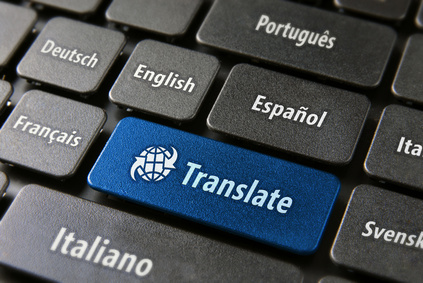 As a Spanish and German language instructor I am sometimes asked to do translation work. However, I am not qualified as a translator or interpreter and must carefully explain this to my clients. They are sometimes confused as they don’t understand why if someone can speak two languages they cannot simply translate between them. The answer to this question is explained in the wonderfully written Found in Translation co-authored by Nataly Kelly, a Spanish-English translator and Jost Zetzsche a German-English interpreter.
As a Spanish and German language instructor I am sometimes asked to do translation work. However, I am not qualified as a translator or interpreter and must carefully explain this to my clients. They are sometimes confused as they don’t understand why if someone can speak two languages they cannot simply translate between them. The answer to this question is explained in the wonderfully written Found in Translation co-authored by Nataly Kelly, a Spanish-English translator and Jost Zetzsche a German-English interpreter.
What most people do not understand is that to become a translator or interpreter one must understand all the varied nuances between two languages so as not to commit any mistakes. Training takes many years of both schooling and “living the language.” Found in Translation is full of anecdotes of what can happen when an unqualified person attempts to translate or interpret.
When I first started learning Spanish 17 years ago I remember coming across words which seemed to be the same in both languages but in fact had very different meanings. Anyone who has studied a language has found themselves on the wrong side of these “false friends.” Kelly details one such example in Chapter 1 in a side note titled Embarrassed to be Embarazada. I always get a good chuckle from my beginner Spanish students when I explain that the Spanish expression “estoy embarazada” has very little to do with being embarrassed but rather being pregnant!
I particularly enjoyed chapter 5, Partaking in Pleasures and Delighting the Senses in Translation. One part of this chapter gives hilarious examples of when companies get international brand names very wrong; so wrong that they are unsellable in English-speaking countries. Some examples given include the following: a Polish juice named Fart, a sports drink in the Czech Republic named Erektus, and a soft drink from Ghana called Pee Cola. For your eating pleasure you will find the Chinese snack food Only Puke, Prick, a Brazilian potato chips brand and Shitto which is apparently the name given to a spicy pepper sauce. I think it’s fair to say that these companies did not invest in proper translation!
An overarching theme of the book is how translators and interpreters often go unnoticed and underappreciated. Even I was surprised at many of the ways translation affects our everyday life without us even being aware of it. Translation is crucial for healthcare, the justice system, scientific advancements, politics and even love stories to reach their potential. I have heard Nataly Kelly speak on one of my favorite language podcasts PRI’s The World in Words where she very eloquently explained how she has a brief window into a very intimate moment in a person’s life and then she is gone often without knowing the outcome. This rang especially true when she described her experiences interpreting 911 calls.
In sum, Found in Translation is a wonderful read that can be enjoyed by language service professionals, students of language or just those curious about this profession. The book contains an extensive notes section with excellent resources for those in the interpreting and translation fields as well as an extensive index to cross reference specific interests.







